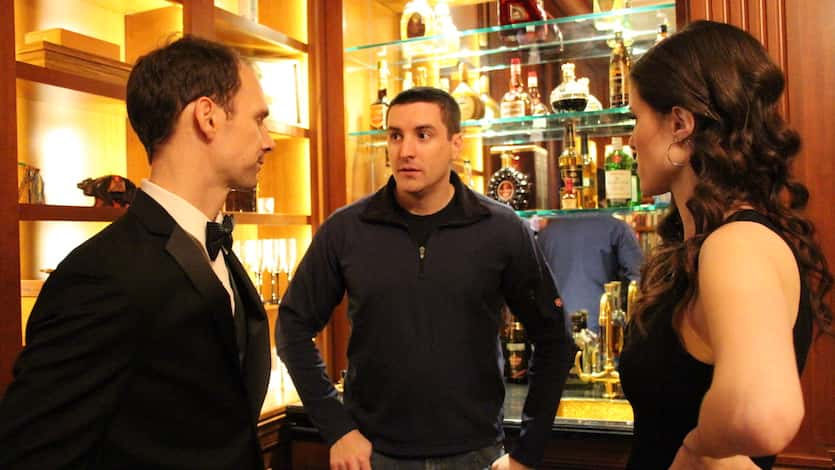One of the perpetual constants of film production is an immense amount of time expended for even the smallest finished videos. With most jobs, people can’t just take a few minutes and see “what you’ve been up to” for the past few weeks or months, but with film production your time is on display. A feature film can take years to craft, but only a few hours or less to watch. With a creative commercial production, many people spend dozens or even hundreds of hours on the finished project even if it’s just a 30 second or 60 second spot. Breaking down the time required is a good way to understand why the costs can balloon for what seems to an average person perhaps not to be a large job.
For the Mr. Formal commercial in Portland, the first phase of the process started with research. I had already heard of Mr. Formal and understood loosely what they did as a business, but I wanted to visit their Website, poke around, and see if any ideas came to mind. On the surface, a tuxedo rental company is obviously in business to rent tuxedos to people who need them, just like a car company sells cars to people in the market to buy a car. But ultimately, so what? Beneath the logical desire or need for a tux or a car, what is going on emotionally for the consumer? What do they want to feel? In a car, maybe they want to feel safe, environmentally friendly, cool, powerful, noticed, trendy, etc. What emotion fits with the car brand and with the messaging the company wants to deliver?
With Mr. Formal, my first thought was about clothing in general. As a guy, I want to feel comfortable, even if the clothing is formal, but more than that, I want to feel my best. I want to look my best. Now, I have the beginnings of the core message I want to deliver. For a creative commercial, the goal isn’t to tell customers they can get a tuxedo for $79 or that any suit can be altered to fit them just right. Those are great selling points, to be sure, but they’re not emotional selling points. Emotionally, I want to grab the viewer and make them feel like renting a tux isn’t just a boring obligation, but an opportunity to look and feel their best. I started thinking about who wears a tuxedo better than anyone, which led me to James Bond. At his core, James Bond is cool, suave, never rattled, and perpetually confident. I wanted to communicate that a Mr. Formal tuxedo will fit you so well, it’ll make you feel like James Bond.
Of course, Bond is a copyrighted and trademarked character, so the key was to boil down elements of Bond that will hint to audiences that we’re referencing Bond. Elements like a pretty girl / femme fatale, martinis (shaken, not stirred), a British car (Aston Martin), and a British accent. After a lot of brainstorming ideas, I started to think about a wish fulfillment type of commercial where our protagonist imagines being James Bond, but wakes from his day dream to find himself in a Mr. Formal store. He knows the tux on display will be the perfect one for him because of how it makes him feel. In the concept, I’ve found a way to make the product seem “cool” and desirable, add some comic relief to make the commercial memorable, and focus on the brand with a simple message at the end.
My main concern was whether my idea fit with the marketing department at Mr. Formal and whether it fit with how they wanted to present themselves. A great idea that’s a poor fit for the brand is not going to lead to an effective commercial. Speaking with Mr. Formal’s marketing team, we were delighted to hear that people actually requested “a James Bond tuxedo” regularly, so the idea was on target with potential customers already. Having received the go ahead for the general idea, I started working on a more specific script. Coming up with a script for a commercial spot is always a challenge because it has to be precisely timed and broken down to avoid issues in editing. Each second is precious when the entire spot is just 30 seconds long, especially with the final few seconds taken by branding and a “call to action” screen of some sort. Keeping each line short is critical as well as having the experience directing enough scenes to understand how long each element takes on set. Any script will take a good deal of tweaking before it can be called completed and sent to the client for review.

